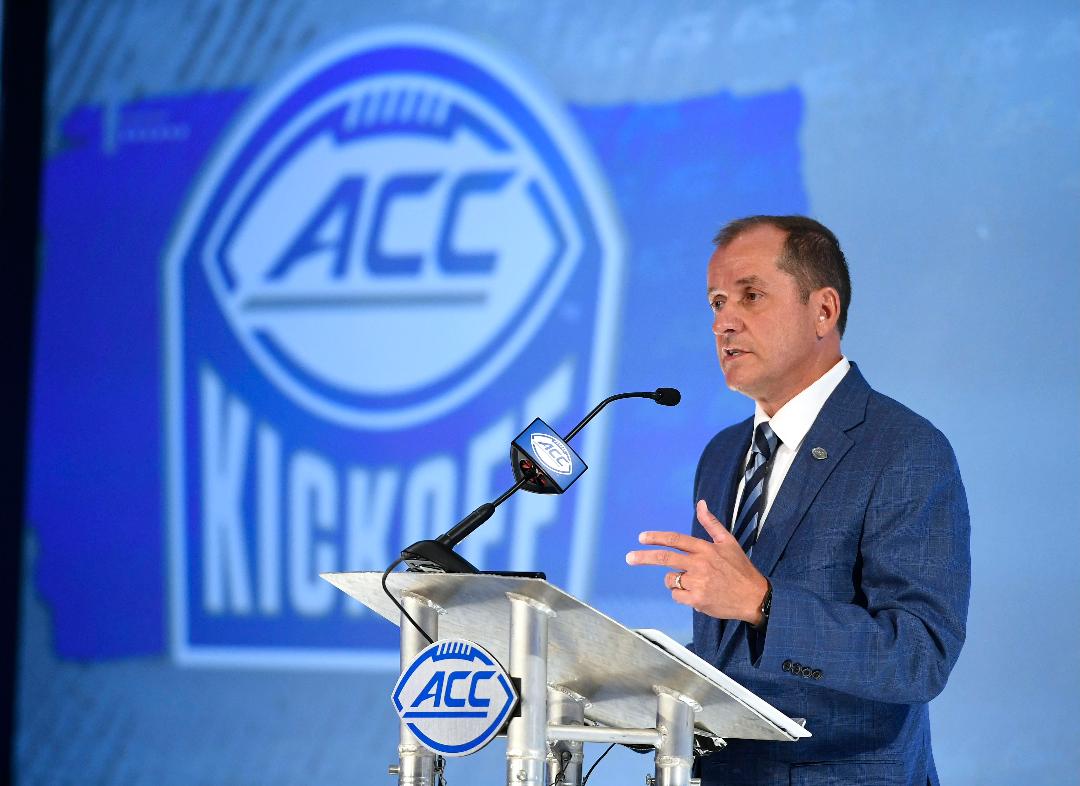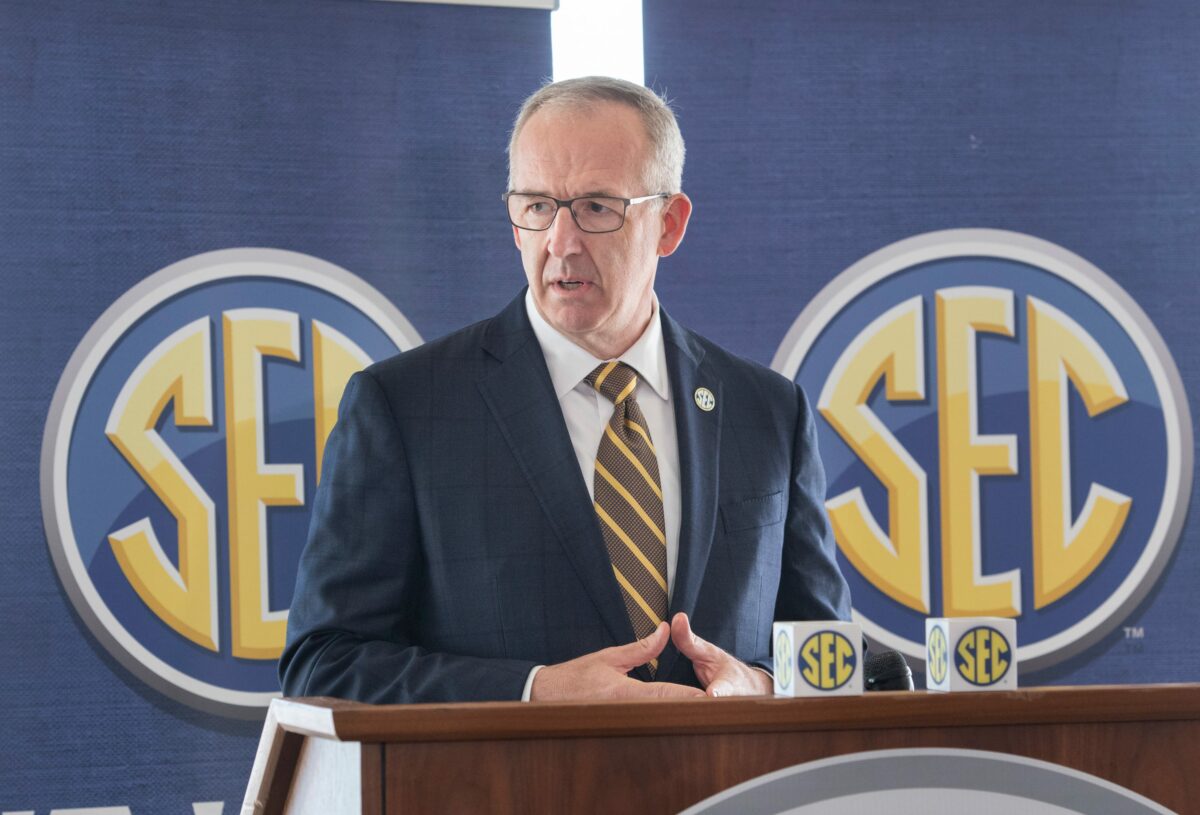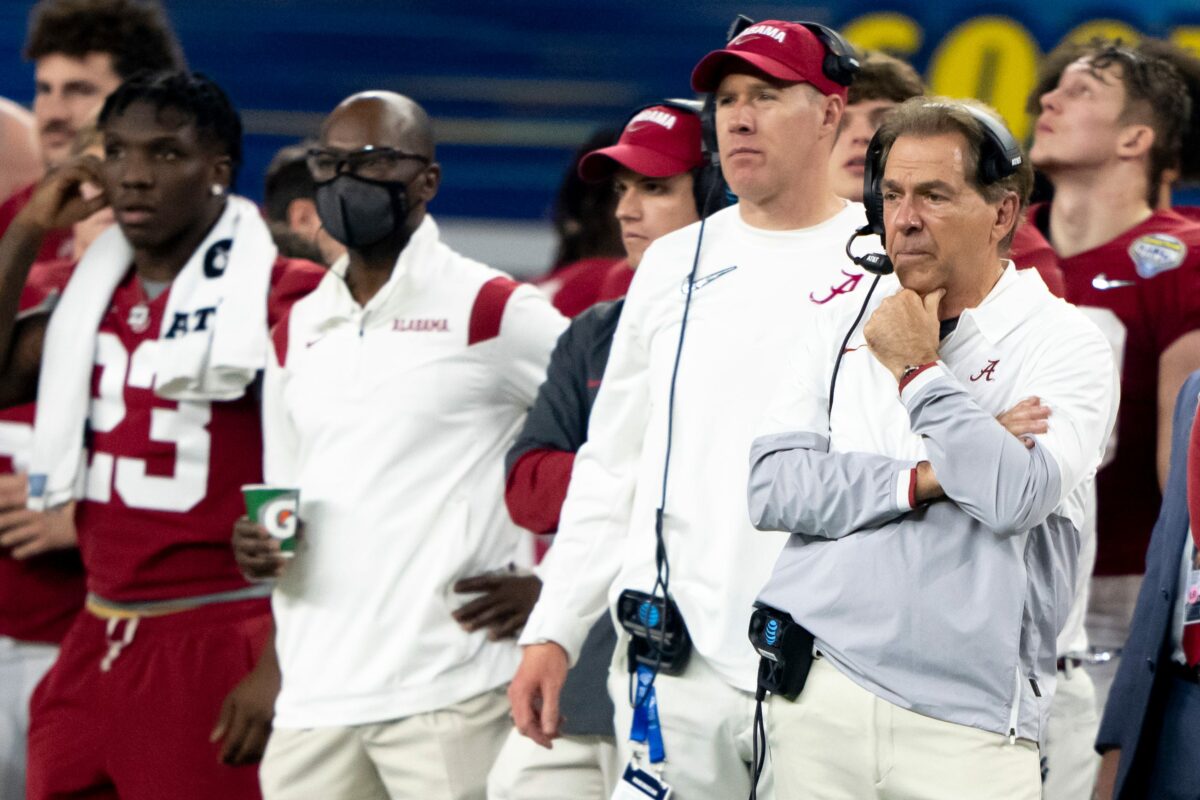The College Football Playoff will stay at four teams through the 2025 season … maybe. Here’s what’s happening and what you need to know.
[mm-video type=playlist id=01f1343a1wt7q817p7 player_id=none image=https://collegefootballnews.com/wp-content/plugins/mm-video/images/playlist-icon.png]
College Football Playoff expansion off until at least 2025 … maybe.
– Contact/Follow @ColFootballNews & @PeteFiutak
2022 College Football Schedules: All 131 Teams
Who wins and who loses if CFP isn’t expanded?
Welcome to the working definition of not being able to walk and chew gum at the same time.
The College Football Playoff will stay at four teams through the 2025 season – the next four years – after the conference commissioners and Notre Dame couldn’t reach an agreement.
Here’s what’s going on.
First, here’s what the deal was supposed to be
Last summer, a few conference commissioners – Greg Sankey (SEC), Bob Bowlsby (Big 12), Craig Thompson (Mountain West), and Notre Dame athletic director Jack Swarbrick – put together a proposal for a 12-team expanded playoff.
The idea was for the top six conference champions regardless of conference to automatically get in, and the other six spots would go to the six highest-ranked teams remaining from the College Football Playoff rankings.
It was a relatively square deal.
It assured that a few Group of Five conferences – the American Athletic, Conference USA, MAC, Mountain West, Sun Belt – would be right in the mix with at least one guaranteed a spot, and it accounted for the big Power Five leagues – ACC, Big Ten, Big 12, Pac-12, SEC – to potentially get more teams in depending on how the seasons flowed.
There were details to iron out about how and where this would all work – like, would it be within the bowl system or would the first round be on the campus of the higher-seeded team? – but those were workable.
But get 12 masters of the universe together and you’ll get 12 totally different opinions.
So …
Who wins and who loses if CFP isn’t expanded?
What’s the problem?
Most of the main concerns aren’t much of a barrier, but overall, it’s not entirely certain why this isn’t quite working other than that the ACC appears to be freaking out a bit.
Commissioner Jim Phillips and the ACC want to do some roll slowing, claiming that this isn’t quite the time for more upheaval in the college athletics world considering all that’s going on with several other seismic changes, but that all seems a tad soft.
One sticking point is the Rose Bowl – the Pac-12 and Big Ten still want their historic ties to the bowl game – and another problem is how this would all work while still maintaining a healthy bowl system, but to reiterate, those are just details that could easily be ironed out if everyone really did want this to happen.
That’s not why the college athletic world is throwing away the opportunity at hundreds of millions of dollars.
Expansion. Without saying it out loud, that’s the problem here, not NIL, the transfer portal, or coaching salaries.
The ACC isn’t in on the expansion fun after totally dropping the ball and not adding UCF, Cincinnati, and Houston when it had the chance. The last thing it wants to do is agree to a bigger College Football Playoff when the landscape could change even more in three years since the conference is ripe for the picking.
The SEC is about to get whole lot bigger and more important with Texas and Oklahoma joining the mix in 2024, if not earlier. There’s no secret that the SEC is on a world domination bender and could at any time get a whole lot more important than it already is.
Don’t think the SEC is stopping its dreams with just Texas and Oklahoma. If it can get those two, everyone is on the table. Geographically, that means the ACC.
Meanwhile, the Big Ten has remained eerily quiet during the expansion moves.
It takes a certain level of school in terms of size, market, prestige, and research for the Big Ten to be interested. It grabbed Maryland away from the ACC in 2014, and in the conference’s perfect world, it would somehow find a way to add perfect-fit North Carolina.
Boston College, Clemson, Duke, Florida State, Georgia Tech, Louisville, Miami, NC State, Syracuse, Virginia, and Virginia Tech all fit into the Big Ten’s Tier 1 Research requirement – as does Notre Dame – and several of those schools would be easy and smart fits for the SEC, too.
Here’s the larger problem for the College Football Playoff expansion. How does all the revenue get distributed?
Fine, so six conference champions get in. What about those other six schools in a 12-team format?
Assume at least two of those spots will go to the SEC every year – especially with Texas and Oklahoma – and assume the Big Ten gets an extra team, and assume that it’s really more like three SEC teams and two extra Big Ten teams, and …
What if the ACC only gets one team in? It’s not in a position right now as a conference to assume it can get anyone but its own champion in – at least until a Florida State or Miami or North Carolina can rise back up.
So who gets all the money? As it is now, the ACC has its bowl deals and is on par with the SEC and Big Ten – sort of. An expanded College Football Playoff screws up the ACC’s possible power.
NEXT: Who wins and loses if the College Football Playoff isn’t expanded? What will happen?












